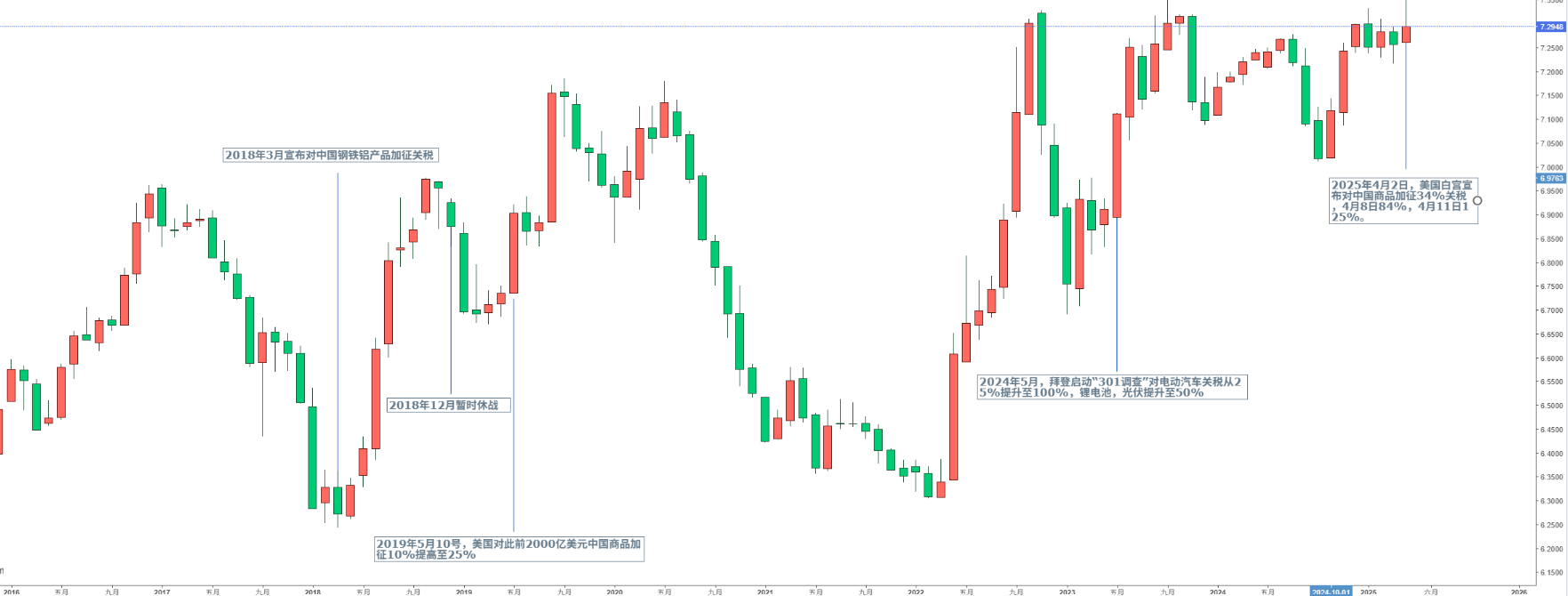Since the United States began imposing the additional tariffs on Chinese goods in 2018, a situation that has escalated and is set to continue into 2025, a key question has been: who ultimately bears the burden of these tariffs? Initially starting with a 10% duty on Chinese steel and aluminum products, the tariffs have expanded to cover a wide range of Chinese imports, with rates reportedly reaching as high as 125% and in some cases even 145%. This period has also seen significant fluctuations in the Renminbi (RMB) to US Dollar (USD) exchange rate. Today, we will explore how these exchange rate movements have impacted Chinese businesses.
As widely acknowledged by economic analyses, the burden of import tariffs is often not solely borne by the importing country. Studies on the US-China trade war generally indicate that a substantial portion, if not the majority, of the tariff cost has been absorbed by US importers and consumers through higher prices. However, the fluctuating exchange rate adds another layer of complexity to this dynamic.

Firstly, by examining the exchange rate trends, particularly around key tariff imposition dates, we can observe a correlation. As shown in exchange rate charts, the RMB depreciated significantly against the USD during periods when the US announced new tariff measures, notably in 2018, 2019, and 2024. For instance, in 2018, alongside the initial 10% tariffs, the USD/CNY exchange rate rose from approximately 6.2 to 6.9, a depreciation of about 11% for the RMB. From a financial perspective, if Chinese exporters maintained their RMB pricing, the depreciation meant they received fewer US dollars for their goods. While US buyers faced additional tariff costs, the strengthened purchasing power of the USD relative to the RMB effectively shifted some of the financial pressure onto Chinese enterprises. This dynamic partially explains why, despite the tariffs, US inflation in 2018 did not see a drastic surge.
Similarly, in 2024, following the initiation of the "Section 301" investigation by the Biden administration and the imposition of significant tariffs – 100% on electric vehicles and 50% on lithium batteries and solar products – the USD/CNY exchange rate again climbed, rising from around 6.7 to 7.25, a depreciation of approximately 8%. This suggests that, in 2024, Chinese suppliers likely absorbed a burden equivalent to roughly 8% of the increased tariffs through the exchange rate movement, with US buyers bearing the remaining portion.
Therefore, from a financial standpoint, businesses involved in import and export trade face a challenge when the RMB depreciates. The reduced foreign currency received for their exports diminishes their global purchasing power, potentially leading to losses for the enterprise. With the US tariffs reportedly increasing to 125% on April 11, 2025, the question arises whether the RMB will continue to depreciate. While a definitive answer remains uncertain, the exchange rate movements observed in 2018 and 2024 suggest that tariff increases may not lead to unlimited RMB depreciation. There likely exists a point at which the pressure from the tariffs is more significantly transferred to the prices of goods in the US market.
Regardless of the future exchange rate trajectory, in this uncertain environment, domestic Chinese enterprises, especially those engaged in foreign trade, may explore strategies to mitigate exchange rate risks. Could invoicing in currencies such as the Euro or others through contractual agreements help avoid exchange rate losses? When conducting transactions in foreign currencies, what are the key financial and tax considerations that need to be taken into account?
If you would like to learn more about these issues, you are welcome to consult with PHC for detailed professional advice.
At PHC Advisory, we can offer you full support on matters regarding doing business in China, or any other issues your business may face. If you would like to know more about policies relevant to your business in Italy or Asia, please contact us at info@phcadvisory.com.
PHC Advisory is a company of DP Group: an international professional services conglomerate of companies with approximately 100 experienced professionals worldwide. We offer comprehensive services in tax, accounting, and financial consulting, including financial supervision, financial audit, internal audit, internal control over financial reporting, and support for audited financial statements and annual audits, ensuring clients' financial transparency and compliance.
Would you like to learn more about the business environment in China? Click the link and download our Practical Guides on Amazon!
The content of this article is provided for informational purposes only, financial advice must be tailored to the specific circumstances on a case-by-case basis, and the contents of this article do not legally bind PHC Advisory with the reader in any way.
IRPEF: Discover the 2025 News for Employed Workers-NEWS-PHC ADVISORY
The Impact of U.S. Tariffs on China-NEWS-PHC ADVISORY

